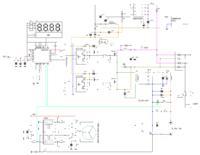Mbox314
Newbie level 5

- Joined
- Feb 23, 2015
- Messages
- 9
- Helped
- 0
- Reputation
- 0
- Reaction score
- 0
- Trophy points
- 1
- Activity points
- 82
Hello,
Instead of using a PWM regulator like a SG3525 or a Tl494 is it possible to use a microcontroller like Atmega?
Instead of using a PWM regulator like a SG3525 or a Tl494 is it possible to use a microcontroller like Atmega?






